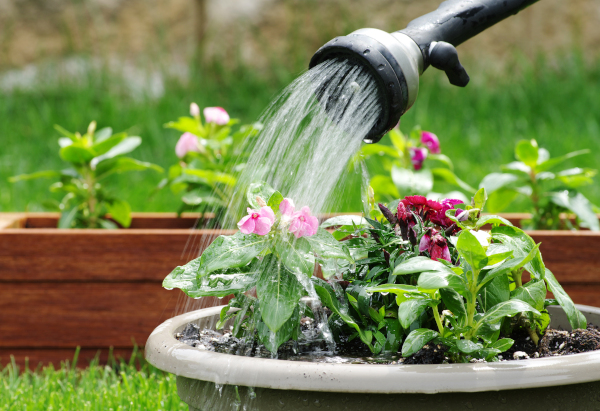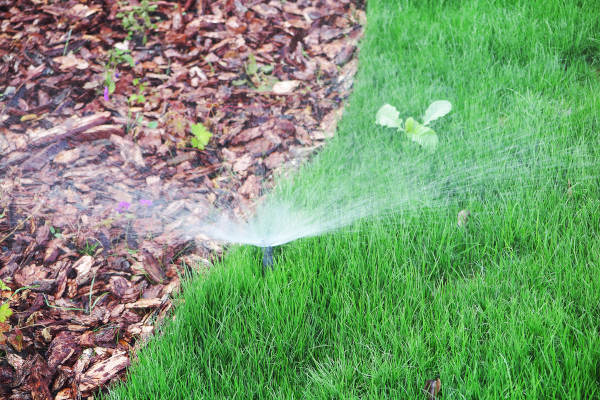
one
two
three


Summers are becoming increasingly hot and that is hard on our plants. This article discusses some ways you can increase your plant’s chances of survival by the way you water them.
There are three ways to water your plants during the summer. Watering is best done between 5 a.m. -10:00 a.m. This allows the leaves of the plant to dry before nightfall, decreasing problems with diseases on your plant.

Watering by hand with a hose is the best way to water your plants in the summer. You can direct the water right to the root zone of the plant. Watering by hand three times a week during the hot weather is the best way to keep your plants alive. Plants in containers need to be watered once a day. However, if you have a large landscape, watering by hand can be time-consuming.

If you don’t have time to water your plants by hand, installing drip irrigation is the next best thing. The water goes directly to the roots of each plant. There are no splashes to wet the leaves or splash soil on them. You can put your drip irrigation on a timer and forget about it. One problem is that the emitters can get clogged. Since drip irrigation is typically covered with mulch, you may not realize there is a problem until your plants start to wilt, turn yellow or brown, or die.

Pop-up sprinklers do not clog and may be better if you do not have time to monitor your irrigation system on a regular basis. Pop-up sprinklers do lose some of the water they put out to evaporation. They also get the foliage wet, increasing the possibility that a fungal disease can attack your plant. Watering in the morning so the foliage dries before nightfall will help stop fungal diseases from moving in.
One only has to look at states to the South and West of us to see what happens when the water runs out. Conserving water not only saves you money but also makes sure you have the water you need in the future.
Irrigation audits are usually done in the spring when your system is set up to run after being drained all winter. However, they can be performed any time the system is in use. There are three parts to an irrigation audit.
Putting down at least three inches of mulch around your plants will help them survive the summer. The mulch helps keep the soil cooler. Mulch also absorbs water and gradually releases it, giving your plants the water they need slowly, so it doesn’t just run off or evaporate. Mulch also controls weeds, which steal water, nutrients, and light from your plants.
Native plants evolved to survive in this climate. All plants need to be watered frequently when getting established. However, after the plants get established, the native ones do not need supplemental irrigation for all but the driest years. There are many beautiful annuals, perennials, shrubs, and trees you can choose from.
Watering a landscape can be time-consuming. Auditing your irrigation system can also be time-consuming and frustrating if you have to replace several sprinkler heads and figure out the optimal time to water in each zone.
Royal Creations Architectural Landscaping can help you water properly and keep your plants alive this summer. We install both pop-up sprinklers and drip irrigation and can configure them to give just the right amount of water for each plant. We also do irrigation audits on existing systems to keep them delivering water to your landscape, and not your sidewalk. If you are interested in what we can do to water your plants properly and keep them alive this summer, just schedule a consultation today.